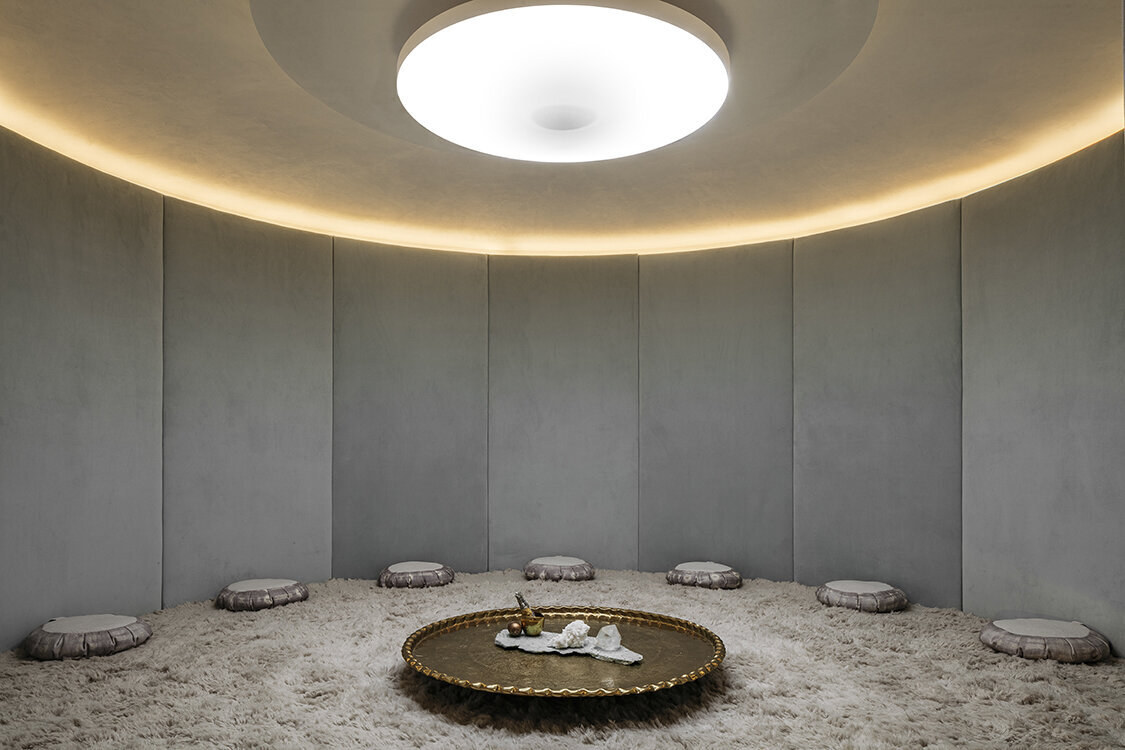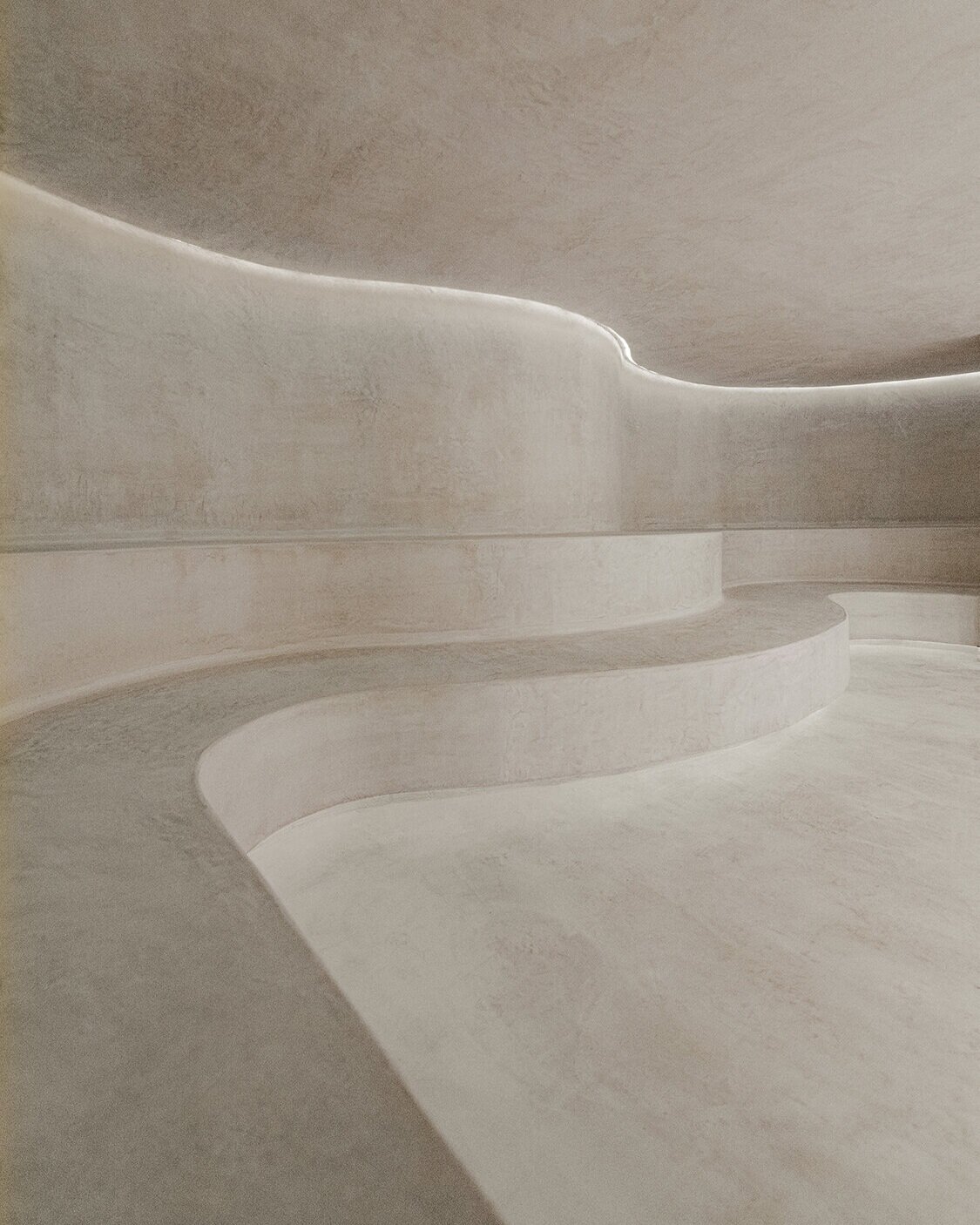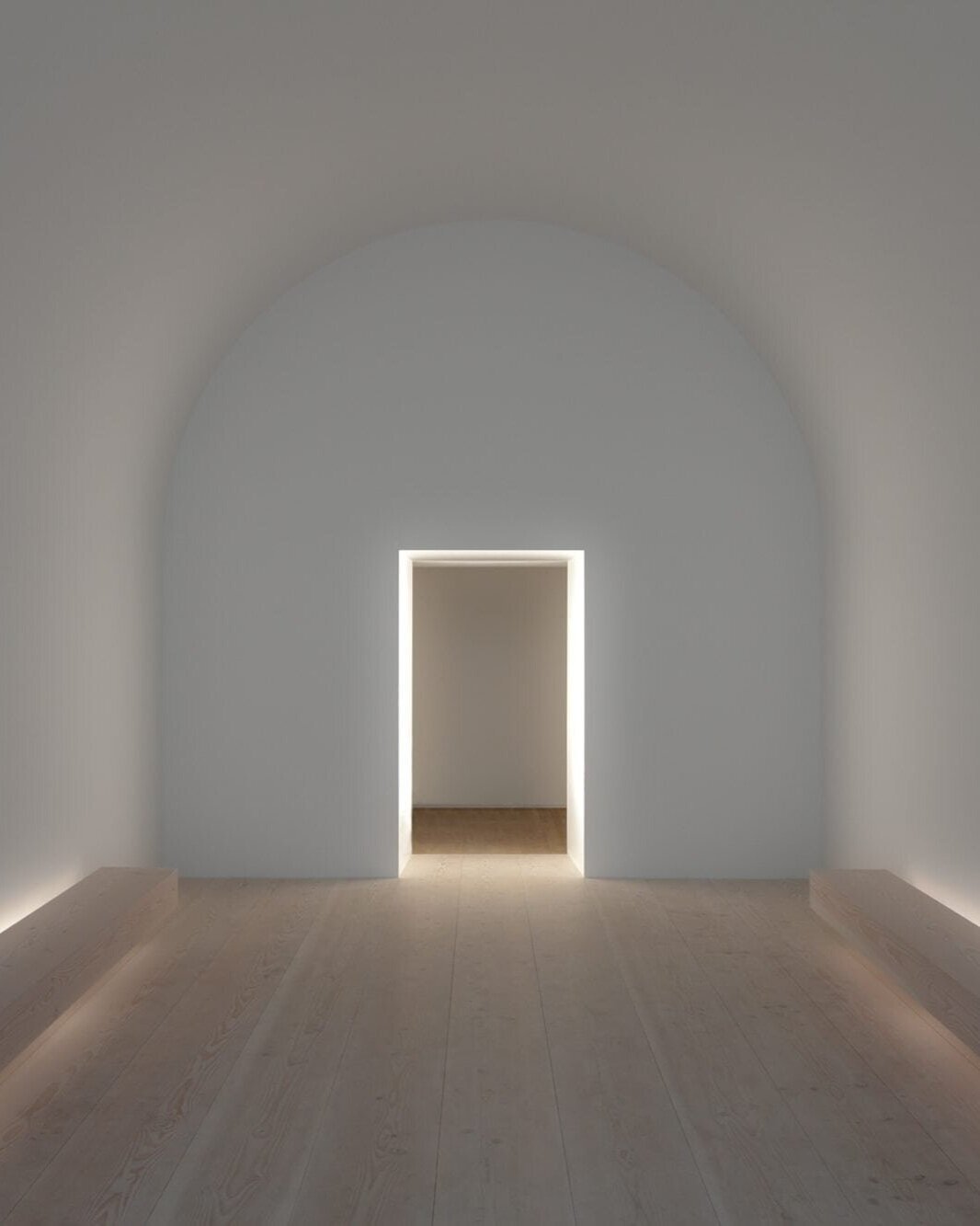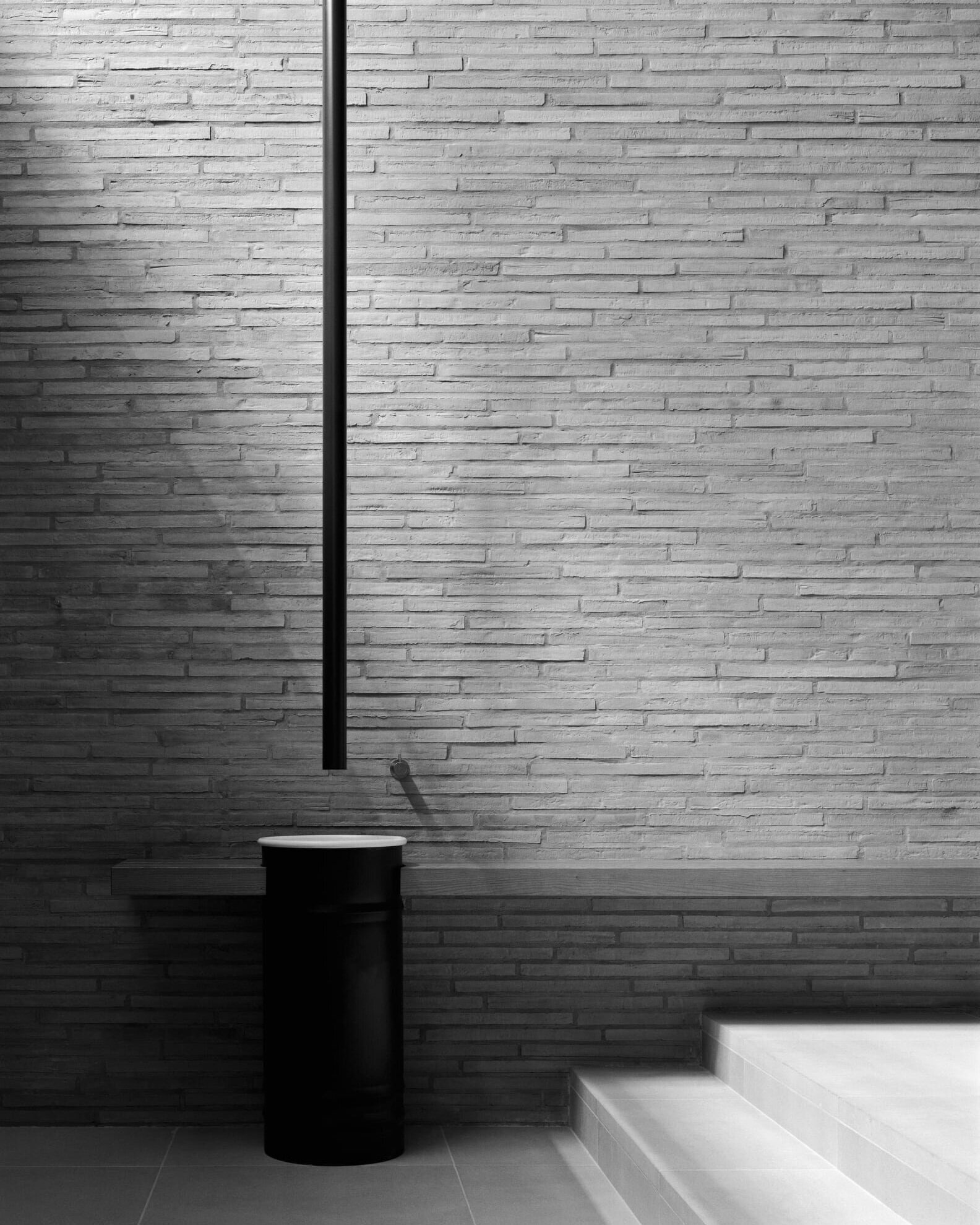Design for Spiritual Living
The WELL
We live in an age of anxiety, driving consumers to look for solace in new forms of spirituality, imbued in everyday life. As wellness extends beyond physical and emotional health to include spiritual balance, interiors strive to provide bliss and set the stage for self-introspection and mystical connections.
The Global Wellness Institute forecasts wellness tourism to reach $919 billion by 2022, growing 7.5% yearly. Spiritual escape and shamanic travel are on the rise, as the hospitality sector strives to offer a growing variety of esoteric offerings, from spiritual healers on room service to crystal spas or vitality rooms. But if travel is increasingly seen as an opportunity to maintain and improve our holistic health, what about our homes and cities? Would we need to escape to faraway lands to try Ayahuasca if our direct environments were designed to help us on our quest to self-discovery and the cleansing of our soul?
A number of recent interior projects aim to answer this question, catering to our spiritual needs by embedding meditation or contemplation into the urban fabric. As we increasingly need to distance ourselves from the bustle of cities and find quiet spaces to breathe, meditation specialty studios and buses and holistic health centres are blossoming.
Re:Mind Studio
Be Time Bus
“The Assemblage is a physical space where others can collectively and collaboratively help one another find a higher expression of themselves. For a community of individuals seeking a transformation within. It is a space for those that want to come together to simply remember there is more to us than what we see.”
— Rodrigo Niño, founder, The Assemblage
In New York, a new co-working, co-living space caters to a community of like-minded professionals wishing to explore their spirituality in modern day context. Their punch line is “The Assemblage: Collaboration for the future of humanity”, with offerings such as cacao ceremonies, breath work and digital wellness. The idea for such a community came to Columbian founder Rodrigo Niño through a mystical experience at an Ayahuasca ceremony, in the jungle of Peru. Feeling “the energy that binds all things together,” he felt the need to help others connect to their soul or spirit, finding the higher expression of themselves.
In a way it is quite interesting to see how a place of businessbecomes a sanctuary for a more connected life. In fact, their events page promises “Programming at the Intersection of Consciousness, Capital & Technology.”
The Assemblage
The Assemblage
The Assemblage
The WELL also just opened in Flatiron, in New York, bringing the holistic spa experience to the super-hectic Manhattan professionals. A private health and wellness club, it is the urban version of a destination spa, combining “the science of Western medicine and the wisdom of Eastern healing.” The club offers specialists in all modalities of medicine, from functional medicine to Ayurveda and traditional Chinese medicine, pairing modern science with ancient wisdom.
Designed by Miami-based studio Rose Ink Workshop, it was founded by three wonderful women entrepreneurs, one of which, Rebecca Parekh worked with spiritual leader and alternative-medicine advocate Deepak Chopra for years.
The WELL
The WELL
“Mainly inspired by eastern aesthetics and meditation, this clinic was conceived following notions of lightness and calm – a deep approach which has been achieved through very simple means. This project demonstrates our ongoing focus on achieving the most with the least.”
— Francesc Rifé
A new, very serene clinic in Valencia, Spain, was designed by Barcelona-based Francesc Rifé Studio in direct reference to Asian meditation rooms. With ash-wood surfaces and translucent glass screens, the facial and dental clinic named Swiss Concept features colours and materials that are typically applied throughout meditation spaces in Asian countries like Japan. Translucent screens applied to all the windows filter daylight streaming through from the outdoors, to further soften the space, while minimalist lanterns emit a warm glow throughout the rooms.
Now that meditation has been scientifically proven to improve the immune system and positively affect the brain, it is no wonder architects should be willing to explore the effects of meditative spaces on our mental and physical wellness, creating open, inviting spaces where patients feel relaxed enough to discuss their health problems. Most definitely, we are moving further and further away from cold clinical spaces we have been accustomed to as new spaces set the scene for a much calmer medical experience.
Swiss Concept
Likewise, commercial interior design and architecture also try to convey a sacred, otherworldly atmosphere, borrowing visual codes from ancient wisdom traditions such as arches and altar-like structures. Apparatus’ showroom in Los Angeles draws inspiration from the Persian heritage of one of his two founders, while John Pawson and Richard Bell’s architecture becomes almost monacal. As we move towards a more and more pared-back aesthetic, could we reach a place beyond minimalism, somewhere we might even call “empty design”? And if so, are we ready to welcome this into our homes, parting from our belongings and living with increasingly less?
Apparatus
John Pawson
Richard Bell
Apparatus
John Pawson
Richard Bell



















